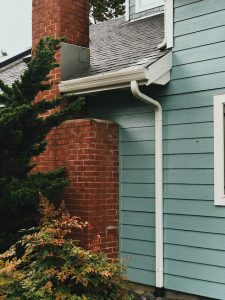 Without a doubt, thunderstorms can be very distressing. You get a perfect cocktail of chaotic weather. Heavy rain? Check! Hail? You got it! Falling debris? How did you know? The type of weather you can see with a thunderstorm can vary, just like the amount of damage your roof can suffer. Whenever storms are in the area, roof damage from thunderstorms is possible. What type of damage? Plenty!
Without a doubt, thunderstorms can be very distressing. You get a perfect cocktail of chaotic weather. Heavy rain? Check! Hail? You got it! Falling debris? How did you know? The type of weather you can see with a thunderstorm can vary, just like the amount of damage your roof can suffer. Whenever storms are in the area, roof damage from thunderstorms is possible. What type of damage? Plenty!
Types of Storm Damage
Due to the chaotic nature of thunderstorms, the type of damage that can occur varies. However, we can go over the most common type of damage. When a storm strikes, you can experience wind damage, rain damage, hail damage, and damage from trees and branches falling. Each of these types of damage can have different effects on your roofing components. So let’s break down what types of roof damage you will see from these aspects of thunderstorms.
Wind Damage
Eastbrook has talked about wind damage before. However, it never hurts to emphasize how damaging wind can be. After all, most people would think rain and hail are more dangerous. Yet, wind damage is the most common type of damage your roof can deal with. Strong, fast-moving winds create havoc in its wake. These winds can rip shingles and gutters from your home. If winds are particularly vicious, they can even damage your roof’s frame! In Michigan, high winds and lightning have caused tree branches and even whole trees to topple on roofs.
Rain Damage
Rain is another common source of roof damage. Heavy rain can be painful to walk through and cause pain to your house. While rain usually cannot damage a roof on its own, in combination with the aforementioned elements, it can be the most destructive force on your home. New vulnerabilities like missing shingles and improper installations can cause leaks in your roof. As a result, you can potentially experience water damage to your attic and walls as it seeps in.
Hail Damage
Although it’s not as common as wind and rain, hail often accompanies thunderstorms. Hail can cause massive damage. After all, it is solid precipitation that can be as small as a pea or big as a baseball. When hail hits your roof, your shingles can suffer from cracks and holes. Over time, these cracks, and holes can damage your roof’s infrastructure eventually leading to a full roof replacement!
Other Roof Damage
Your shingles are not the only part of your roof that can be damaged during a thunderstorm. Some other damages include:
- Granule Loss
- Clogged and Broken Gutters/Downspouts
- Damage to Roof Supports or Accents
If you are worried that your roof has suffered thunderstorm damage, please get a Free roof inspection and estimate from Eastbrook Construction!

